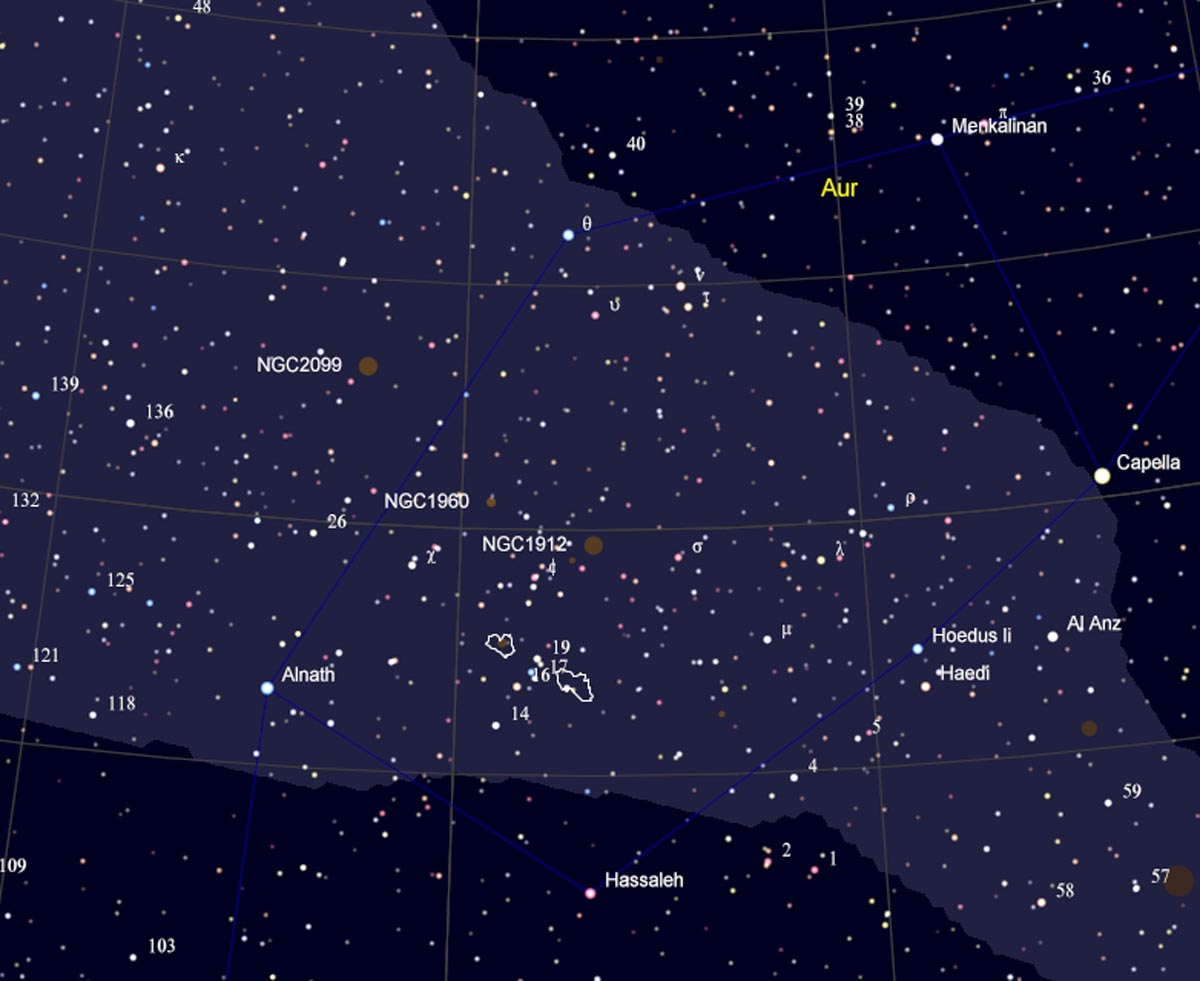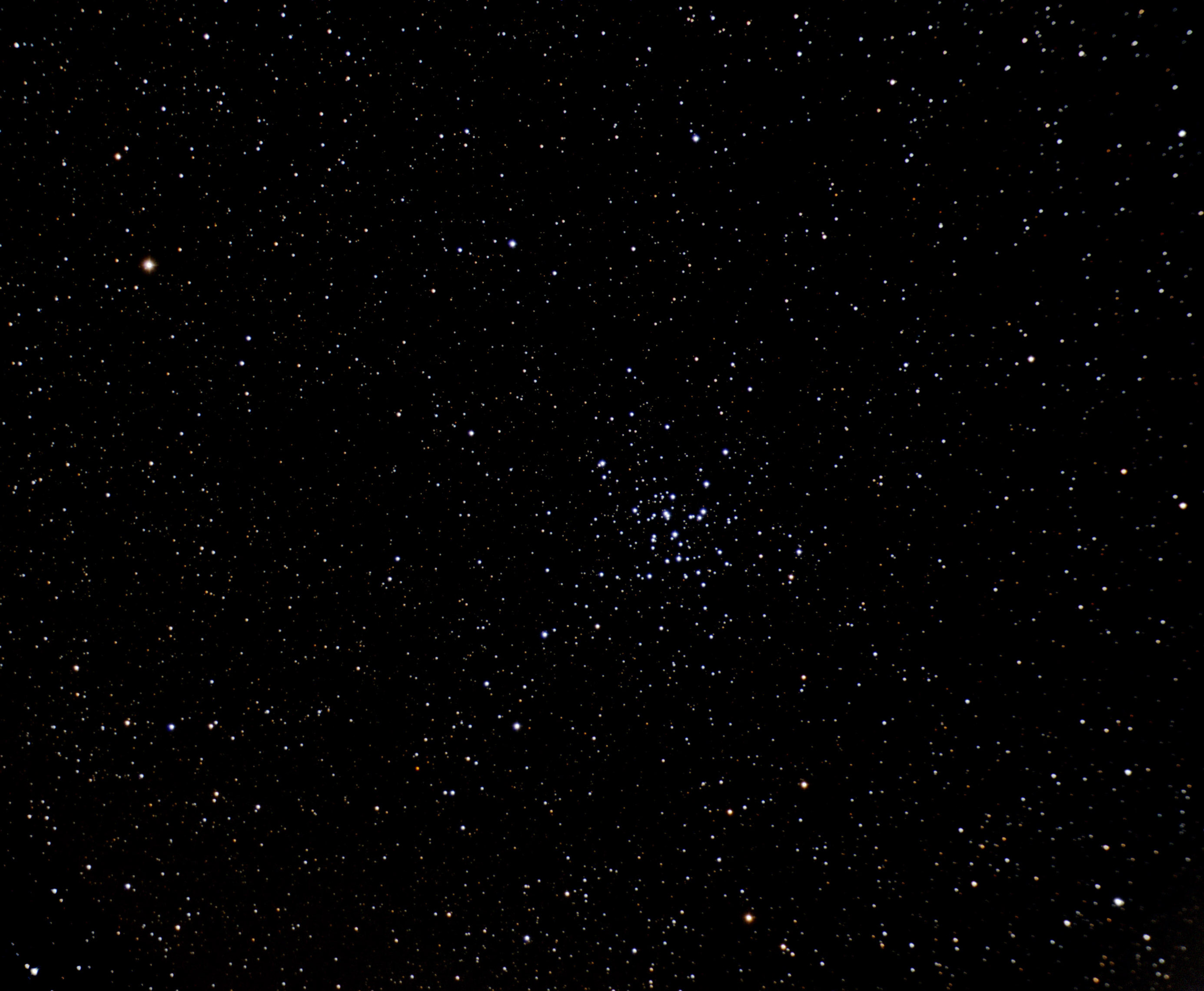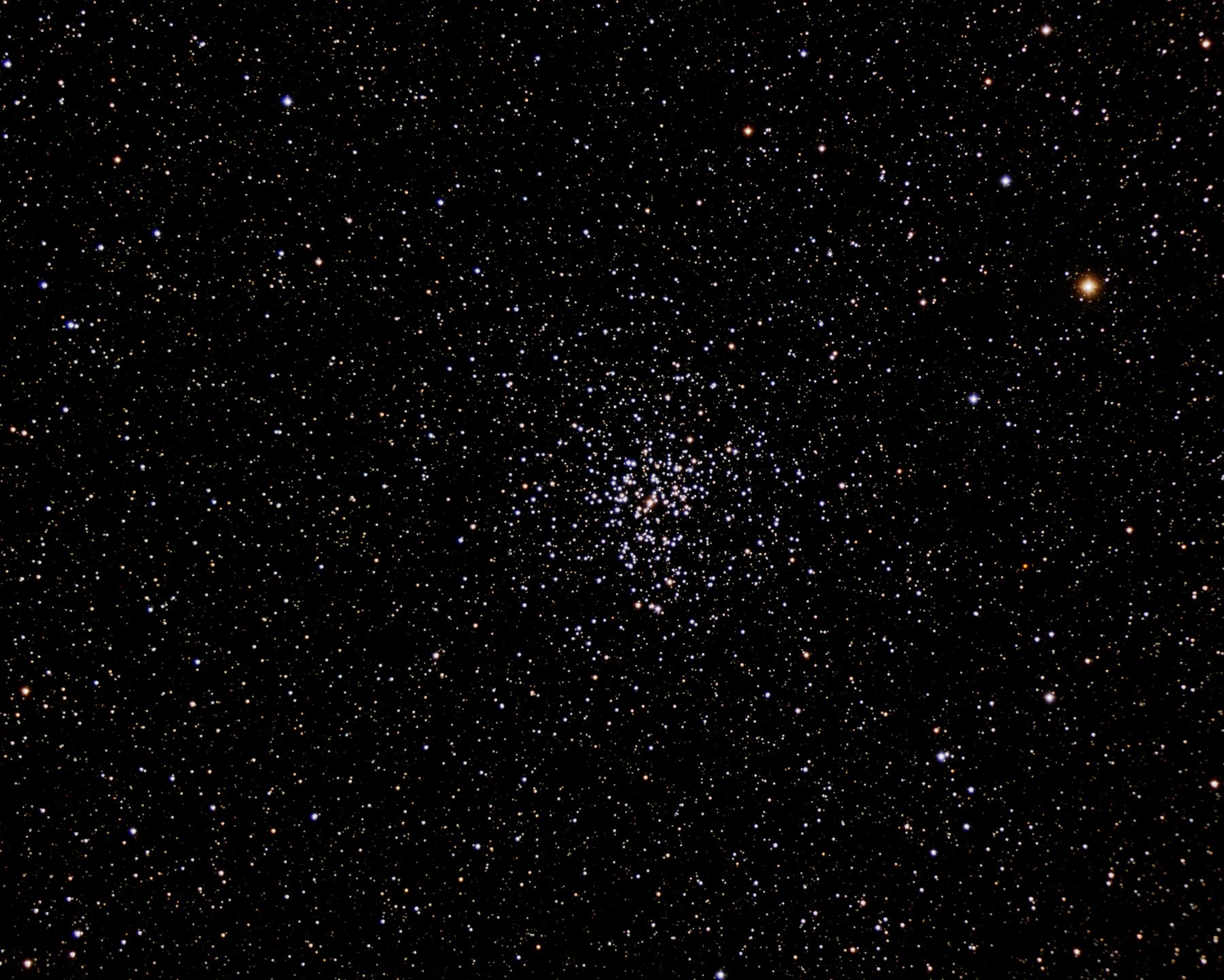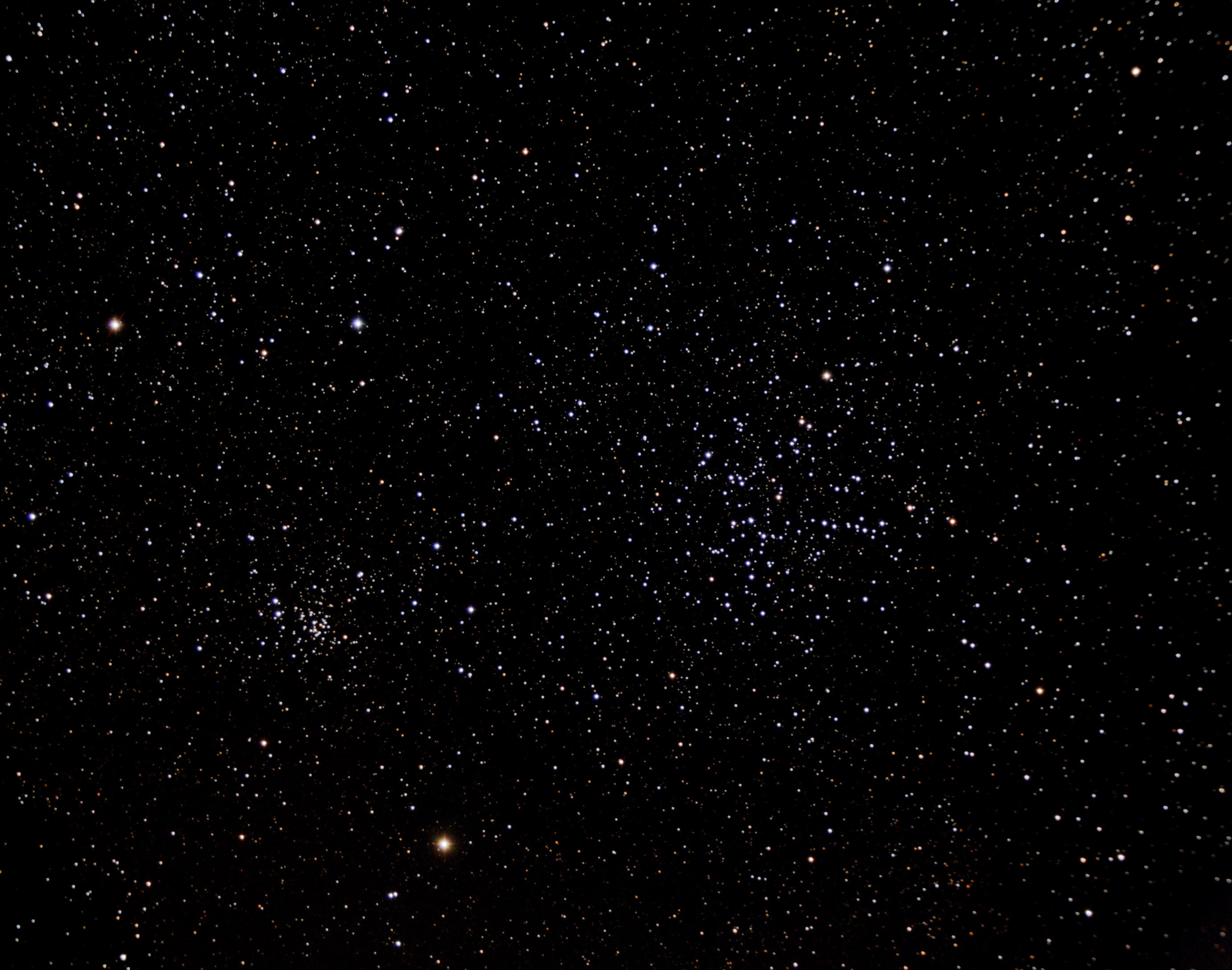
 | SOCO Blog |
14 April 2015
HODIERNA'S CLUSTERS
Every deep-sky observer is familiar with the name of Charles Messier (1730-1817) thanks to the extensive lists of star clusters, nebulas and galaxies that he published in the 18th Century. His initial (M) is given to 110 of these types of objects, a list that constitutes the "Messier Objects" that are so often the targets of beginning and seasoned astronomers. However, Messier was not the first to use the telescope to observe and describe deep-sky objects. The telescope was invented in around 1608, and Galileo (1564-1642) was quick to turn it upon the heavens. He first described his observations of the night sky in his book Sidereus Nuncius ("The Starry Messenger"), published in 1610. While he made no systemmatic investigation of deep-sky objects, he did note that the Milky Way and other "glowing patches" (like M 44, the Praesepe cluster in the constellation Cancer) were composed of individual stars.
What might be considered as the first systemmatic investigation of deep-sky objects using the newly developed telescope was made by a little-known Catholic priest, Giovanni Batista Hodierna (1597-1660). From 1637 until his death, Hodierna served Carlo and Gulio Tomasi, the Dukes of Montechiaro in Sicily, as priest and, later, as court mathematician. The Dukes provided Hodierna with a house, some land, and funds for pursuing his scientific endeavors. Like his contemporary Galileo, Hodierna was a "Renaissance man" and was interested in many aspects of science, including mathematics, physics, meteorology, and botany. He was particularly interested in astronomy. He published early observations of the rings of Saturn, the moons of Jupiter, the Moon, comets, and sunspots. To me, what is most notable were his observations of deep-sky objects. Working with a telescope of similar design to Galileo's (having a magnification of 20X), he observed and recorded around 40 objects. He published these in 1654 in a book printed in Palermo— because he included fairly specific information on their locations and, in some cases, provided maps of their locations in the sky, we can today identify many of his objects. Most of the objects are open clusters or asterisms, but he also observed the Orion Nebula (M 42), the Lagoon Nebula (M 8), and the Andromeda Galaxy (M 31). Of these objects, he was the original discoverer of ten (M 6, M 8, M 36, M 37, M 38, M 41, M 47, NGC 2362, NGC 6231, and NGC 2451). He was the first to describe the Alpha Persei Moving Group (Mel 20), was the probable discoverer of M 34, M33 and NGC 752, and was the possible discoverer of NGC 2169 and NGC 2175. He also provided the first known drawing of the Orion Nebula.
Hodierna also seems to be the first to attempt a classification system for deep-sky objects. He divided objects into three groups: Luminosae (objects that could be resolved into individual stars with the naked eye, like the Pleiades), Nebulosae (objects that could be resolved into individual stars using the telescope, like Praesepe), and Occultae (objects that could not be resolved into individual stars even with the telescope, like M 31).
So, why are we familiar with Messier's list and not Hodierna's list? Sicily's isolation in Europe made it somewhat of a backwater at the time, and Hodierna's publications did not receive a wide distribution. In fact, Hodierna's published list of deep-sky objects was only re-discovered in 1984. Hodierna's achievements during the earliest days of the telescope can now be recognized for their groundbreaking nature. He has a lot in common with many amateur astronomers today, who enjoy exploring the heavens in isolation and anonimity.
By the way, if you are wondering how these early astronomers could observe these faint deep-sky objects with their small telescopes (many not much bigger than our finder scopes today), keep in mind that they had one great advantage over most of us today— very dark and clear skies. After all, Messier did his observing in the heart of the city of Paris! Try that today.
In honor of Hodierna, I have recently acquired imagery for perhaps his best-known discoveries— the open clusters that we now know as M 36 (NGC 1960), M 37 (NGC 2099), and M 38 (NGC 1912). As shown in the star map in Figure 1, these clusters lie along the winter Milky Way in the constellation Auriga. Their location in the sky is marked by the nearby brilliantly beautiful golden first-magnitude star Capella. Interestingly, Capella was the first astronomical object that I viewed through the (then new) SOCO 120-mm refractor.

Figure 1. Map showing the relative locations of M 36 (NGC 1960), M 37 (NGC 2099), and M 38 (NGC 1912) in Auriga.
Source: Cartes du Ciel.
The following three images show color composite images for the three clusters. To produce each color image, nine 90-second monochrome images were shot through each of red, green and blue filters (27 images in all for each cluster). Dark frame images were used to subtract the sensor noise from the imagery, and previously collected flat frame images were applied to correct for variations in brightness across the imagery due to characteristics of the optical system. Each image was corrected for atmospheric transmissivity based on the zenith angle of the observation. Weight factors were then applied to each image to correct the color balance according to the exoatospheric G2V correction procedure. All image processing was performed using AIP4WinV2 and Maxim DL. Acquisition of these images was in part a test of the exoatospheric G2V correction procedure. The images were acquired when the clusters were low in the western sky. M 37 ranged in elevation from 38° to 48° above the horizon during the imaging session. M 38 ranged from 32° to 42° above the horizon during the imaging session. M 36 ranged from only 22° to 32° above the horizon during the imaging session. There should have been considerable attenuation of starlight, particularly in the blue wavelengths, for targets at these elevations. The exoatospheric G2V correction procedure was very effective in restoring the proper color balance for the stars in the imagery.

M 36 (NGC 1960)

M 37 (NGC 2099)

M 38 (NGC 1912) and smaller cluster NGC 1907
Table 1. Some physical characteristics of M 36, M 37 and M 38.
|
While visually close in the sky, the three clusters exhibit marked differences in their appearance. These differences are related to their physical characteristics and actual positions in space (see Table 1). M 36 is a very young cluster, with an estimated age similar to the Pleiades. It's stellar population is dominated by blue giants of spectral type B, and the cluster contains no red giant stars. M 36 seems to share other characteristics with the Pleiades, although M 36 is around 10 times more distant.
While M 36 is a fairly sparse cluster, M 37 is exceptionally rich. With over 2000 member stars, it is one of the richest clusters in the Milky Way. Its richness reminds me of M 11 (the "Wild Duck Cluster") in the constellation Scutum. M 37 is a much older and more evolved open cluster, with recent estimates of its age at greater than 500 MY. The stars in M 37 are primarily main sequence stars, with no blue giants of the type found in M 36. It contains 35 red giant stars, one of which is the brightest star in the cluster. M 37 also has a significant population of white dwarf stars, which is again an indicator of its greater age. It is currently thought that M 36 and M 37 are at about the same distance from the earth. Thus, the difference is appearance between M 36 and M 37 (where M 36 looks "bluer" and M 37 looks "yellower") is real and is not related to differences in interstellar attenuation of light.
M 38 is intermediate in age between M 36 and M 37. It's brightest star is a type G giant with a luminosity 900 times that of the Sun. In the same field of view as M 38 is the smaller open cluster NGC 1907. NGC 1907 is too faint to have been noticed by Hodierna or Messier. It had been thought that this small cluster was actually physically close to M 38 (only around 30 LY away). However, recent estimates place NGC 1907 at around 1000 LY more distant than M 38, making this small cluster more closely a neighbor of M 36 and M 37. Also, NGC 1907 is about twice as old as M 38, making its stellar population more similar to M 37.
Even in binoculars or a small telescope, M 36, M 37 and M 38 are beautiful sights against the background of Milky Way stars. We can only imagine Giovanni Batista Hodierna's delight when he first laid eyes on them some three and a half centuries ago.
G.F. Serio, L. Indorato and P. Nastasi, 1985. G.B. Hodierna's Observations of Nebulae and his Cosmology. Journal of the History of Astronomy, Vol. XVI, No. 45, p. 1-36 (February 1985).
B.A. Archinal and S. J. Hynes, 2003. Star Clusters. Willmann-Bell Publishing, Richmond, VA.
R. Stoyan, S. Binnewies, S. Friedrich, and K. Schroeder, 2008. Atlas of the Messier Objects. Cambridge University Press, Cambridge, UK.
 Return to SOCO Blog Page
Return to SOCO Blog Page
 Return to SOCO Main Page
Return to SOCO Main Page
Questions or comments? Email SOCO@cat-star.org